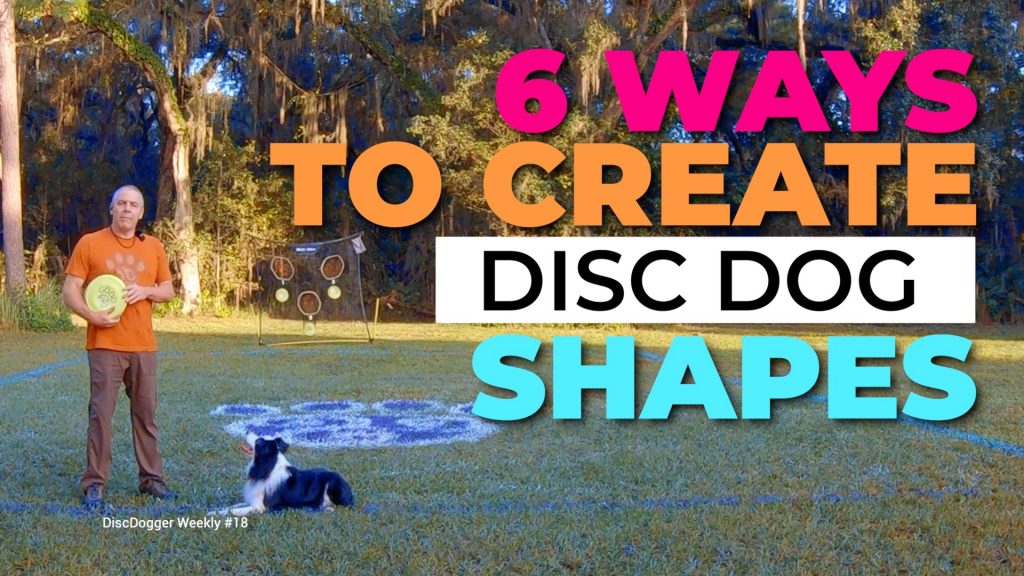
6 Ways to Create DiscDog Shapes and Improve Team Movement & Flow
A judged subcategory in UpDog, Shapes are not well understood in disc dog freestyle. That said, they do have bearing in your score in other organizations depending upon the judges sitting on the panel and they definitely impact your flow and Team MovementTeam Movement is how dog and handler move, as a team, out there on the field. It is a judging category in some organizations and certainly is a focus of many judges, players,... More.
Shapes & Angles and Lines & Arcs
I could write a book on Shapes and Lines, and there are many ways to think about this aspect of the game. I tend to use the terms rather haphazardly and depend on context to define them. It requires a bit of experience and understanding to follow the conversation sometimes, and that can’t really be avoided.
Shapes can be the pattern created between dog, handler, and disc on the throw whether that be a line or a triangle or something in between. Any time the dog takes off for the disc from the handler or a spot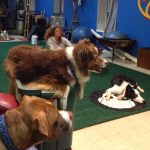 Spot is a “go to a place”, or “go to a mat” behavior. This means that the dog seeks out and performs a duration behavior on a spot of the handler’s choosing. A... More near the handler, you are most likely going to get a straight line.
Spot is a “go to a place”, or “go to a mat” behavior. This means that the dog seeks out and performs a duration behavior on a spot of the handler’s choosing. A... More near the handler, you are most likely going to get a straight line.
Shapes can be the pattern of the game in general, the arcs and lines or linear and lateral movement that the dog or the team perform throughout their round.
Shapes can be the path of the dog en route to the catch, the outrun after the catch, or even the retrieve back to the handler. And then the handler comes into play – how we move can change the shapes and lines in our game.
Generally speaking, though, shapes should denote the general pattern of play. You want to display a variety of patterns and shapes with your throwing, handling, and Team Movement in order to keep the judges and fans entertained and to create a sense of novelty and drama.
0:28 – Dumping Off on the Around
Lots of people use this technique to shape a line that creates a shape (see what I did there?). By tossing the disc out to the side as the dog is releasing from the around and leaving the handler, you change the departure point. Consider it a poor man’s flank, as that is where the dog winds up.
This departure point for catch number two means that the dog, disc, and handler have that triangular relationship that defines a shape. The dog, handler, and team will all be on the hook for Team Movement to execute some sort of intercepting catch. This can be done in clock and counter fashion and in a matter of fact or fancy fashion.
We get a look at the difference between successful application of this in the Eppie Beckham (0:50) and counter clock dump off (1:05) and a not-so successful application of Shapes with the first Eppie Beckham attempt (0:38). On that first attempt the line is broken due to a poor toss on my part.
1:20 – Backwards Through Creates a Line
If you have a super round dog and have trouble creating linear patterns, making a throw out of the Backwards Through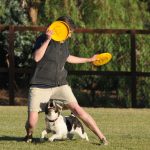 If your dog moves through your legs from back to front, that is a backwards Through. The Backwards Through usually sets up in one of two ways depending on where your dog’s starting... More leads to a straight line shot from the handler to the disc.
If your dog moves through your legs from back to front, that is a backwards Through. The Backwards Through usually sets up in one of two ways depending on where your dog’s starting... More leads to a straight line shot from the handler to the disc.
This can be done in clock and counter fashion. This can also be done as the first throw in some sort of 1-2 sequence like the Eppie Beckham from above.
1:30 – Thru N Fly
Bringing the dog through on the run and delivering to a spot behind you also sets up a straight line from the handler to the disc. The further you throw it, the straighter the line.
1:48 – Zig Zag
A proper Zig Zag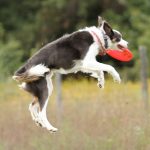 A Zig Zag is a series of catches in smooth succession that forces the dog to move back and forth across the field. Usually performed at a distance of 8-20 yards, the Zig... More always features some sort of intercepted shape. If there is no interception aspect to the pattern, you are simply doing passes back and forth.
A Zig Zag is a series of catches in smooth succession that forces the dog to move back and forth across the field. Usually performed at a distance of 8-20 yards, the Zig... More always features some sort of intercepted shape. If there is no interception aspect to the pattern, you are simply doing passes back and forth.
Zig Zags that have the disc moving perpendicular to the dog or even towards the dog are more aggressive and have more shape than discs that are running away from the dog which are more linear in nature.
The more linear the pattern, the less precise the throw needs to be and the less Team Movement is required to make the catch. The perpendicular pattern requires more Team Movement more precision and timing in the throw to be successful.
2:56 – Around the World
In order to create a round Around the World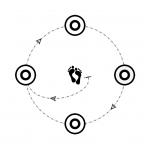 An Around the World is a disc dog flatwork pattern consisting of 4 catches in a circular pattern around the handler. This pattern is typically larger than 5 yards and often features creative... More at anything but the shortest of distances, all the throws have to be thrown as interceptions. The triangle created between dog, disc, and handler in a proper AroundAn Around, or a Go Around is the traditional disc dog set up move. The dog goes around the handler’s body in a clockwise or counter clockwise fashion allowing dog and handler to... More the World is obvious and aggressive.
An Around the World is a disc dog flatwork pattern consisting of 4 catches in a circular pattern around the handler. This pattern is typically larger than 5 yards and often features creative... More at anything but the shortest of distances, all the throws have to be thrown as interceptions. The triangle created between dog, disc, and handler in a proper AroundAn Around, or a Go Around is the traditional disc dog set up move. The dog goes around the handler’s body in a clockwise or counter clockwise fashion allowing dog and handler to... More the World is obvious and aggressive.
If the throws are not thrown as interceptions, the Around the World will stretch out and become an Around the Egg or Around the Oval pattern.
Generally speaking, the more round the Around the World the more difficult and proper the Shapes will be.
3:33 – Passing
Because the dog passes close to the handler on the run, nearly all passes are linear patterns or create linear patterns.
To ensure that the Passing maneuver is linear, the handler will often have to handle the dog on the way in to bring the dog close enough to pass directly next to the handler.
Starting close to the handler or running close to the handler to chase a disc will lead to a linear pattern.




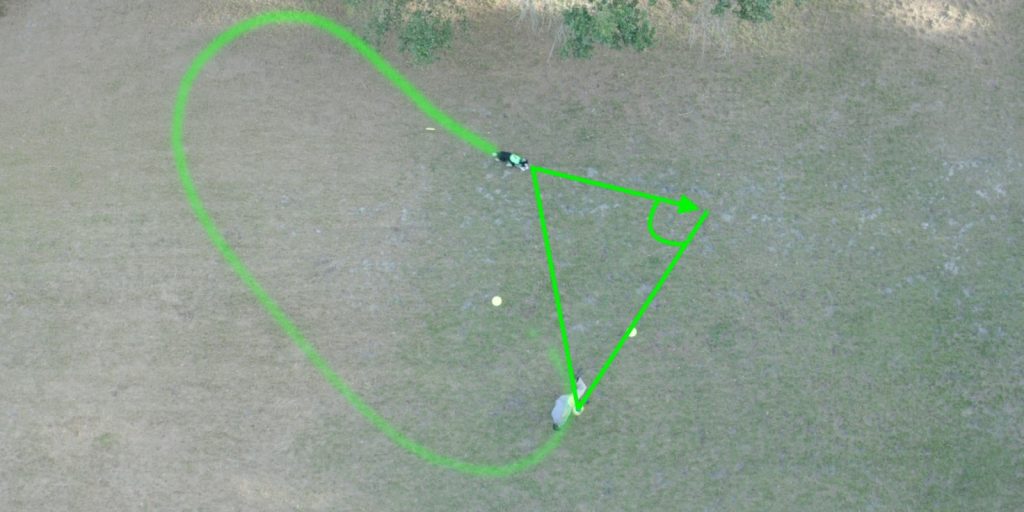
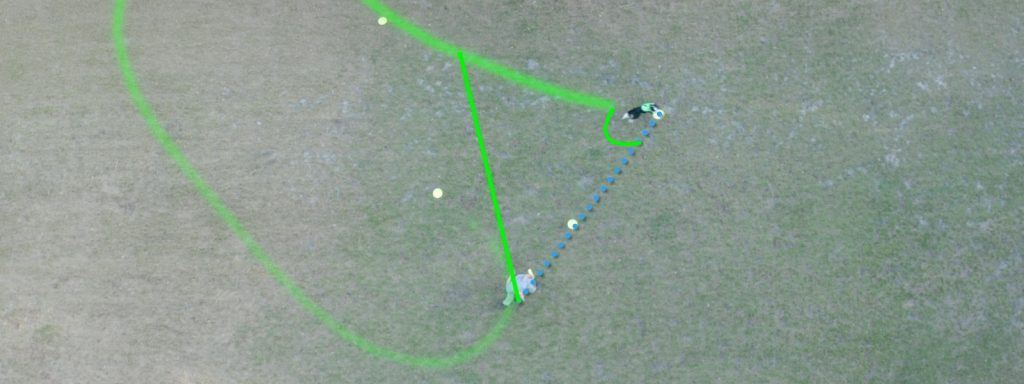
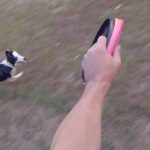

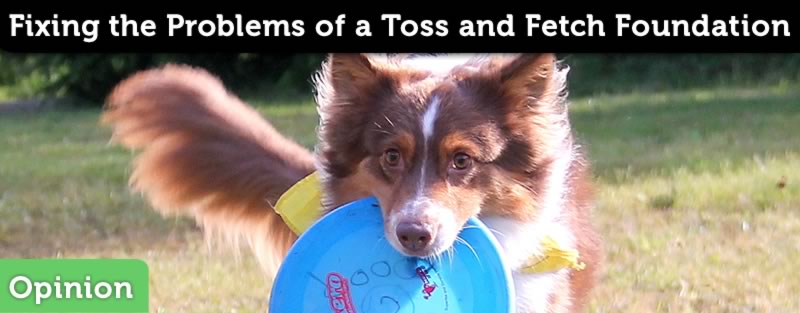
Responses